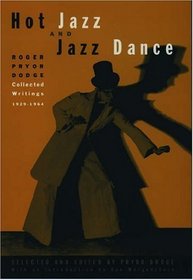Search -
Hot Jazz and Jazz Dance
Hot Jazz and Jazz Dance
Author:
Long before Martin Williams, Gene Lees, or Gunther Schuller, Roger Pryor Dodge was writing seriously about jazz. A ballet, vaudeville, and jazz dancer, Dodge turned his critical attention to the music in the 1920s, helping to build the respect jazz has long since achieved. Now, for the first time, the essays and reviews of one of America's firs... more »
Author:
Long before Martin Williams, Gene Lees, or Gunther Schuller, Roger Pryor Dodge was writing seriously about jazz. A ballet, vaudeville, and jazz dancer, Dodge turned his critical attention to the music in the 1920s, helping to build the respect jazz has long since achieved. Now, for the first time, the essays and reviews of one of America's firs... more »
ISBN-13: 9780195071856
ISBN-10: 0195071859
Publication Date: 12/14/1995
Pages: 368
Rating: ?
ISBN-10: 0195071859
Publication Date: 12/14/1995
Pages: 368
Rating: ?
0 stars, based on 0 rating
Publisher: Oxford University Press
Book Type: Hardcover
Members Wishing: 0
Reviews: Amazon | Write a Review
Book Type: Hardcover
Members Wishing: 0
Reviews: Amazon | Write a Review
Genres:
- Arts & Photography >> Performing Arts >> Dance >> Jazz
- Arts & Photography >> Performing Arts >> Dance >> Modern
- Humor & Entertainment >> Music >> Musical Genres >> Jazz




